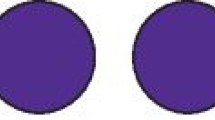Abstract
Data sources
The Cochrane Oral Health Group Trials Register, The Cochrane Central Register of Controlled Trials (CENTRAL), Medline , EMBASE , CINAHL , AMED and CANCERLIT databases
Study selection
Both parallel group and crossover randomised trials were included. Interventions were classified into saliva stimulants and saliva substitutes, and these were compared with either placebo or another intervention. The types of intervention included lozenges, sprays, mouthrinses, gels, oils, chewing gum or toothpastes.
Data extraction and synthesis
Two or more review authors independently carried out data extraction and assessed risk of bias. Trial authors were contacted for additional information as required.
Results
Thirty-six RCTs (1597 participants) met the inclusion criteria. Two trials compared saliva stimulants to placebo, nine trials compared saliva substitutes to placebo, five trials compared saliva stimulants directly with saliva substitutes, 18 trials directly compared two or more saliva substitutes and two trials directly compared two or more saliva stimulants. Only one trial was at low risk of bias and 17 were at high risk of bias.
Due to the range of interventions, comparisons and outcome measures in the trials meta-analysis was possible for only a few comparisons. Oxygenated glycerol triester (OGT) saliva substitute spray shows evidence of effectiveness compared to an electrolyte spray (standardised mean difference (SMD) 0.77, 95% confidence interval (CI) 0.38 to 1.15) which corresponds to approximately a mean difference of 2 points on a 10-point visual analogue scale (VAS) for mouth dryness.
Both integrated mouthcare systems (toothpaste + gel + mouthwash) and oral reservoir devices show promising results but there is insufficient evidence at present to recommend their use. Although chewing gum is associated with increased saliva production in the majority of those with residual capacity, there is no evidence that gum is more or less effective than saliva substitutes.
Conclusions
There is no strong evidence from this review that any topical therapy is effective for relieving the symptoms of dry mouth. Well designed, adequately powered randomised controlled trials of topical interventions for dry mouth, which are designed and reported according to CONSORT guidelines, are required to provide evidence to guide clinical care.
Similar content being viewed by others
Commentary
Purpose
This systematic review examined the timely and critical question of what intervention is more effective for treating dry mouth (xerostomia).
Strength and limitations
This well-conducted systematic review contrasted two broad categories of interventions for dry mouth: saliva stimulants and saliva substitutes.
It perused seven independent databases to obtain the available evidence from 1950 to the present. Only intervention randomised controlled trials with either parallel run-in groups or cross-over treatments were included. This functional bibliome yielded a large sample size: 36 trials involving close to 1600 participants.
The evidence was scrutinised by multiple trained reviewers who assessed the quality of the evidence by the measure of ‘risk of bias’. Reviewers extracted the relevant data for meta-analysis.
The evidence obtained was generally varied and weak. Meta-analysis was possible for only a few comparisons, which limited the statistical strength and stringency of the consensus of the best available evidence.
Results
The concerted analysis of the data yielded the clinically relevant information that: the saliva substitute, oxygenated glycerol tri-ester (OGT)-based spray is more effective than any water-based electrolyte spray, while chewing gum increases saliva production, the available evidence does not support chewing gum as better or worse than saliva substitutes, the available evidence is suggestive, but weak and insufficient to this date, in support of the effectiveness of a gel-releasing device mouth care system.
Clinical relevance
Dry mouth is a common problem with many possible causes: there could be a reduction in the quantity of saliva produced, or a change in the composition of saliva. Patients undergoing cancer treatment often have a feeling of dry mouth, as do patients and elderly under a variety of medication regimens. Dry mouth can be a chronic problem for many patients, and can bring about higher incidence of caries and periodontal disease, as well as problems in speaking, chewing and swallowing, and reduced quality of life.
Interventions for the management of dry mouth include topical therapies, applied directly to the inside of the mouth, such as sprays, lozenges, mouth-rinses, gels, oils, chewing gum or toothpastes, among others. Because of the multiplicity and variability of interventions for dry mouth, solid data are scant to establish the superior effectiveness of one intervention vs. another.
This systematic review points to a saliva substitute, oxygenated glycerol tri-ester (OGT)-based spray, as being among the most effective interventions for dry mouth. Future studies must examine whether treatments being investigated contribute to increasing quality of life, in addition to being effective in reducing or controlling xerostomia.
Author information
Authors and Affiliations
Additional information
Address for correspondence: Luisa Fernandez Mauleffinch, Review Group Co-ordinator, Cochrane Oral Health Group, MANDEC, School of Dentistry, University of Manchester, Higher Cambridge Street, Manchester, M15 6FH, UK. E-mail: luisa.fernandez@manchester.ac.uk
Furness S, Worthington HV, Bryan G, Birchenough S, McMillan R. Interventions for the management of dry mouth: topical therapies. Cochrane Database Syst Rev 2011; 12: CD008934.
This paper is based on a Cochrane Review published in the Cochrane Library 2011, issue 12 (see www.thecochranelibrary.com for information). Cochrane Reviews are regularly updated as new evidence emerges and in response to feedback, and the Cochrane Library should be consulted for the most recent version of the review.
Rights and permissions
About this article
Cite this article
Chiappelli, F. No strong evidence that any topical treatment is effective for relieving the sensation of dry mouth. Evid Based Dent 13, 16–17 (2012). https://doi.org/10.1038/sj.ebd.6400841
Published:
Issue Date:
DOI: https://doi.org/10.1038/sj.ebd.6400841



